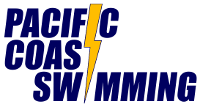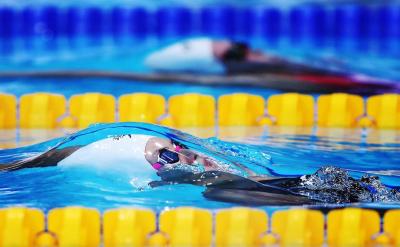You are here
Swimming Canada: Return to Swimming Framework
With at least 282,000 individual training sessions completed since pools began reopening, and zero recorded spread of COVID-19 amongst swimmers at pools, Swimming Canada is encouraging all clubs and universities to return to the pool as health and safety protocols allow.
Swimming Canada has compiled and is releasing a variety of data demonstrating how the sport has resumed safely and should continue to do so as more pools reopen. Last week highlighted the success of the reopening at High Performance Centres, which have offered more than 4,000 individual training opportunities to 46 top Olympic and Paralympic hopefuls from the time pools began reopening in July until the end of September.
Furthermore, Swimming Canada also conducted a detailed survey extended to the head coaches of its 450 registered age group swim clubs. The response was overwhelming, with more than a third of clubs reporting as of Sept. 30, representing more than half of currently registered swimmers.
“Following the successful return of the Swimming Canada High Performance Centres, our clubs and universities have also been following strict COVID-19 return protocols. We recognize some clubs and or university programs have not yet returned and we hope this data can show the way forwards for those pools not yet open or which are operating in a restricted way and have not allowed all who can return to get back to training,” said High Performance Director and National Coach John Atkinson.
Swimming Canada’s return to swimming plans have been based on the work of the National Return to Sport Taskforce led by Own The Podium, which developed the risk mitigation process. Work continues on an upcoming Version 3 of Return to Swimming Resource Document, in partnership with the provincial sections, which each have province-specific plans, and clubs and universities have put their own risk mitigating plans into place.
“The return to swimming training across Canada has been achieved through a robust risk mitigation process. The next challenge is to see all pools open, to have all clubs return with all of their members. The pools are so important for our Canadian swimming community to return to full strength,” Atkinson said. “The physical and mental health benefits for our whole nation are significant in returning to sport, and we know because of the data we have gathered that the return is going well in swimming. The clubs and universities that have returned to swimming training have created a controlled environment to mitigate risk with a very responsible group of athletes, coaches and club members.”
The return to training has been a gradual process across the country based on pool availability. As of Sept. 30, approximately half of Canadian clubs responding had access to a least one of their facilities for more than 30 days. With restricted access to pools, less than one third of clubs have reached their 2019-2020 registration numbers. Based on the data collected from the survey, and Swimming Canada’s membership database, approximately 23,500 swimmers have returned to training in Canada. It is estimated that they have completed a total of 282,000 training sessions between reopening and Sept. 30.
Through all of the sessions reported there has not been any recorded spread of COVID-19 amongst the swimmers at the pool.
Of the clubs who have returned, only a third have access to all of the training time that was available to them before the initial COVID-19 shutdowns in March. Less than a quarter have all their members back in full training.
“It is clear that the return to swimming has been undertaken in an extremely safe and controlled process,” Atkinson said. “With at least 282,000 individual training sessions completed, there has not been any recorded transmission at a club or university training session. The challenge now is to have all pools open and all pre-pandemic training times available to our club and university programs. There is compelling evidence to do so and to provide all swimmers the opportunity to return to the pool. A way needs to be found to support the facilities to open.”
Access the article HERE.

